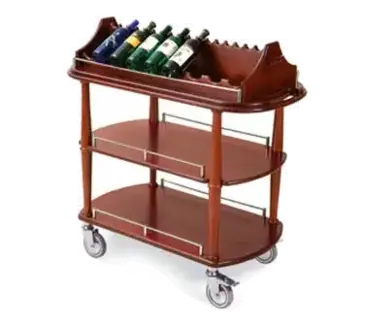Wine tasting has been long practiced since the 16th century. Prior to the Renaissance, wine drinking was almost a necessity. You see this was during a time when other liquids like milk and water were disease-ridden. Wine might have tasted awful back then, but it was a natural disinfectant due to having alcohol in its contents. Much like whiskey tasting, wine tasting has evolved significantly over the course of history and has been perfected in the 21st century. If you’re looking to get your foot in the door with wine tasting, look no further! Here’s our guide to becoming an amateur wine taster!
In addition to wine tasting, wine coolers have revolutionized the way we store and serve our favorite vintages. These specialized appliances ensure that each bottle is maintained at the perfect temperature, preserving its flavor profile and enhancing the overall tasting experience.
Set a Neutral Environment
The first thing you’re going to want to do when you’re wine tasting is making sure you’re in the right environment. What exactly does this mean? Well for starters, you’re going to want to make sure there’s no background noise. Being in a loud crowded room may disrupt concentration. Are there any lingering aromas? Anything from perfume to pet odors may affect your ability to get a clear whiff of a wine’s aroma. The next thing you’ll want to do is make sure you’re using the right wine glass.
Finding the Right Equipment
Having the right equipment not only enhances the aroma but the ambiance as well. There are four basic parts of a wine glass: the base, the stem, the bowl, and the rim. All wine glasses are going to be different for what you’re attempting to taste. You’d never use a flute for a pinot noir or a tulip for a burgundy.
If it’s within your budget, go for a crystal wine glass. Crystal wine glasses enhance the aromas in wine and look better than their glass wine counterparts. Glass wine glasses are more durable than crystal making them a better option for those in the restaurant industry. Depending on the wine you’re tasting, you’re going to want to go for the right glass.
The bowl in a white wine glass is slightly smaller, more u-shaped, and more upright than a red wine glass. A red wine glass will have a bigger opening and fuller bowl that allows you to dip your nose inside to detect the complex aroma that only a red wine could produce.
Sight
Once you have the right wine glass and are in a neutral environment, observation of the wine is next. When pouring your wine glass, you’ll want to make sure that it’s filled about one-third of the way. Put your wine glass up to the light and give it a slight tilt. Doing so allows you to see the wine’s wide range of colors. Look straight down the wine glass and observe the color. Through this, you can pick up on what grapes were used by color and scent.
By viewing your wine at different angles, you’ll pick up on more subtle things that you may not have picked up on at a different view. Tilting your glass things out the rim and can tell you more about a wine’s age and weight. A side view can show you how well the fermentation process has worked. If it’s murky, chances are it could’ve had issues within the fermentation stages.
Scent
We’re almost to tasting! Don’t worry. Next up is smelling the wine. You’re going to want to give it a before and after sniff. When sniffing your wine, you’ll want to hover your nose above the glass. Don’t shove your nose directly into the glass as it’ll overload your nose with the aroma. Smell it then give it a couple of swirls to help the wine’s bouquet (the wine’s aroma) to open up. Put the glass on a table and hold it by the stem and rotate it quickly by the stem. Write down what you could smell prior to giving your wine glass a swirl. With the aromas circulating around the wine glass, write down what’s different than before. After swirling you’ll notice wine dripping from the side. These are what’s known as “legs” or “tears” of the wine.
Tasting
Wine tasting is finally here! Now that you’ve studied the color of your wine and you’ve smelled the aroma it’s produced, it’s time to taste your wine. You’re going to want to take a small sip of your wine, swirl it around in your mouth, and then spit it out. You can swallow it, but if you’re tasting a series of wines, it’s best not to overload your senses. The tongue can pick up on many different tastes. Does it taste bitter? Does it taste salty? Is it sweet? There should be a correlation between the taste and the aroma. The notes you’ve picked up through smelling your wine should match up with the taste.
Wine tasting can be a fun hobby for those that are willing to pick it up. You could start with a bottle of pinot grigio and repeatedly sample it until you feel confident or just dive right into tasting a series. Invite some friends over some time and ask taste wine with them! Using what you’ve learned in this guide, help them pay attention to things they might’ve not caught on to! Over time you can improve the craft of wine tasting and maybe try becoming a sommelier!


